Once upon a time, the “SC” in NASCAR stood for Stock Car. The category aimed for manufacturers to bring their models to the track featuring lightly modified standard body shells but with drivetrain upgrades within tightly controlled specifications. While the intent was noble, manufacturers constantly sought what is sometimes referred to as “the unfair advantage.” Because there was limited scope to extract additional power from the V8 engines within the rules, companies turned their attention to aerodynamics, with vehicles like the Plymouth Superbird as a shining example of creative thinking. NASCAR soon outlawed the Superbird and cars of that type, but manufacturers continued their quest for aerodynamic efficiency more subtly. The result was cars like this 1986 Chevrolet Monte Carlo SS Aerocoupe. Only 200 examples rolled off showroom floors during that model year, and like many vehicles from that era, they became unloved. Today, good examples are climbing in value as people jump aboard the nostalgia train. Our feature Monte Carlo presents well and is a turnkey proposition for its next owner. The seller has listed it here on eBay in Madisonville, Kentucky. They have set a BIN of $28,500 but leave the option to make an offer. I must say a big thank you to Barn Finder Larry D for spotting this beauty.
While aerodynamics is a consideration for NASCAR competitors and manufacturers on road and short courses, it is critical when speeds climb on tracks like Daytona and Talladega. It was with a focus on those iconic tracks that General Motors turned its eye when developing the Aerocoupe. They faced stiff competition from Ford’s Thunderbird because it proved more efficient and capable of producing the required downforce than the GM models. The answer was to adopt a sloping rear window that allowed the air to flow smoothly across the rear spoiler. The result was a significant increase in downforce without the cost of extra drag. It allowed the Monte Carlo Aerocoupe to secure eighteen wins out of the twenty-nine races in that season. Arch rival Ford scored five wins, while the remaining races were split between Buick, Pontiac, and Oldsmobile. It proved one of the most dominant results in NASCAR history and helped Chevrolet justify the development costs of the Aerocoupe. Our feature car is 1-of-200 produced during 1986 and presents well for its age. The supplied photos aren’t great, but they support the seller’s claim that they recently treated it to a repaint in its original shade of White. They added the correct stripes to give the exterior an as-new appearance. The recent work means the panels are straight, with no dings or marks. The seller doesn’t mention rust, and none is visible in the supplied photos. The alloy wheels are unstained, and the overall first impression is positive.
This Monte Carlo rolled off the production line during The Malaise Era, making it no surprise that its 305ci V8 produces a modest 180hp. Buyers faced a single drivetrain combination for this model. That meant the power fed to the rear wheels via a four-speed 200-4R automatic transmission, while power assistance for the steering and brakes were standard fare. The journey down the ¼ mile was unlikely to set your heart racing. It took 17 seconds. As mentioned in previous articles, a “garden variety” Monte Carlo SS covered the same distance in 16.6 seconds, indicating that the aero upgrades offered no advantage at freeway speeds. The seller states they recently rebuilt this Monte Carlo’s engine and transmission, and it has accumulated a mere 200 miles since. It runs and drives well, although they use it primarily for shows.
I am disappointed by the supplied photos because they fail to provide an effective overview of this Aerocoupe’s interior. The burgundy cloth and vinyl upholstery look good, although a slipcover hides the driver’s seat. There are no signs of crumbling plastic and no evidence of aftermarket additions. The car has air conditioning, power windows, and an AM/FM radio and cassette player. It isn’t clear whether it scores cruise control or power locks, which would be an excellent question to ask the seller.
Some might look at the 1986 Monte Carlo SS Aerocoupe and consider that with only 200 produced, it represented a “toe in the water” approach by the company due to the radical styling. However, that figure was a deliberate target, representing the lowest production total a manufacturer could build for acceptance into NASCAR competition. The Aerocoupe proved a racing success, and Chevrolet built a further 6,052 examples for the 1987 model year before scrapping the Monte Carlo as its frontline NASCAR model in favor of the Lumina. It is unclear how many first-year cars still exist, but it would be fair to assume that a few followed many vehicles from this era to the scrapyard. The Aerocoupe shares one other trait with some cars from the 1980s, where values have begun to climb noticeably. The BIN on this one is slightly below what you might find in the current market, but if an interested party made the seller an acceptable offer, it could prove to be a bargain. Is that thought enough to make you consider pursuing it further?




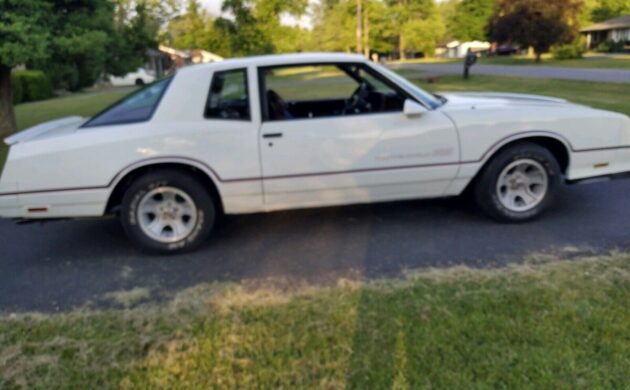
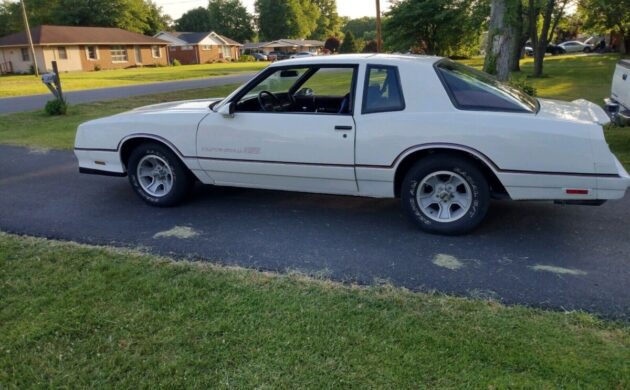
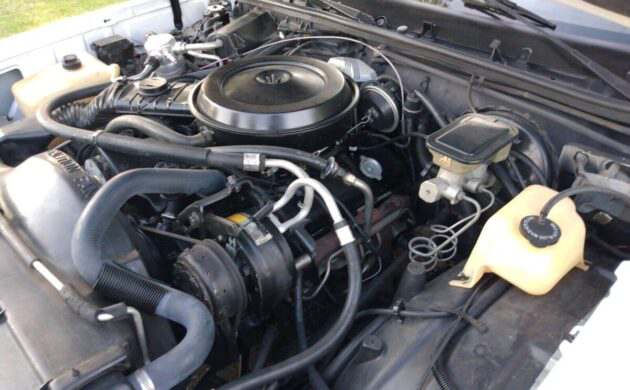

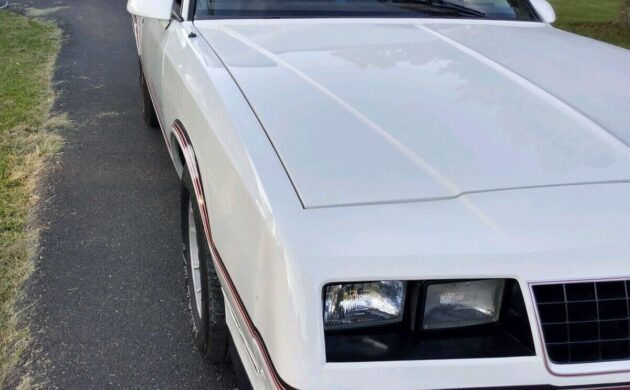
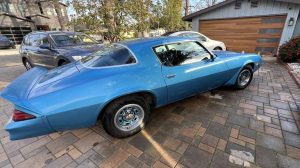

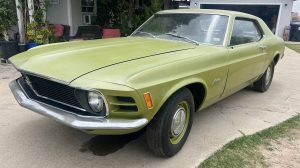
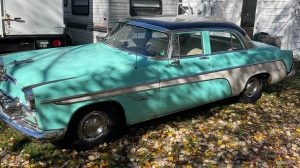


$28k for any 80’s GM product is too much.
Generally speaking, I would have to agree. The Monte Carlos through the mid-late ’80s are a personal favorite of mine. But everyone must realize that $28.5K can get you a virtually limitless option of available and frankly far more desirable vehicles that aren’t an anemic 305/180.
The 1 of 200 is the bright spot for this dog of a performer. Just like the Aero coupe Grand Prix 2 + 2 it is just a low production number car with a dog of a engine.. Steep money and would look for a better car with a real engine in it.
They had to make at least 500 to be NASCAR legal.
This model didn’t compete in NASCAR
@Dave Schotz
Not at that time. By 1986, 200 was the required number.
Below is a copy and paste from Road and Track Magazine dated May 23, 2016. The article was titled “The Unknown Muscle Car Dodge Built to Dominate NASCAR”. It is about the 1969 Charger 500. It was a car specially modified by the factory to make it more competitive in NASCAR. At that time in 1969, NASCAR did require a minimum of 500 copies of a car to be built to be allowed in NASCAR. But here is the copy and paste about what really took place. It said:
“At the time, NASCAR required at least 500 cars to be sold to the public for a car to be considered “stock.” When the tests confirmed improvement with the modifications, Dodge gave the go-ahead for the cars to be sold to consumers. Dubbed the “Charger 500,”
“But somewhere along the line, Dodge either lost interest in building the street cars or someone noticed that France wasn’t counting how many cars were actually being built. Most agree that only 392 Charger 500s were built and sold to the public.”
So, by 1986, that rule requiring 500 cars had been relaxed to 200 cars.
I have seen this car. In person. But not in 36 years!
The reason I say that is because I attended the World 600 NASCAR race at Charlotte Motor Speedway on Memorial Day weekend in 1986. Chevrolet had just recently announced the debut of the Monte Carlo Aerocoupe. And they had brought all 200 of these cars and had them on display in the infield at the track. And we went over to look at them. All were white with red interior.
SO, that means I’ve seen this car!
Larry D, nice find! I wasn’t aware they had relaxed the minimum from 500 – 200, thanks for sharing.
These were marketed only in the South. I hated them new. Stupid looking. I eventually bought a loaded 88 MC SS, but sold it like a dumb ass. In 87, GM built more than 6,000 of the Aerocoupes. Before you guys badmouth 80s MCs, look at the prices of late. Stupid money for a 180 hp car. But when you look at the offerings from GM today, these are a far better choice. Today. Total junk.
@Dave
You wrote: “This model didn’t compete in NASCAR”
Oh but they most certainly did! The Monte Carlo SS Aerocoupe competed in 1986, 1987 and ’88 in The NASCAR Cup Series. It was replaced by the Lumina in 1989.
Below is a pic of Dale Earnhardt with his championship-winning 1986 Monte Carlo SS Aerocoupe. It is of Earnhardt doing his infamous windshield cleaning during a caution at Richmond Raceway.
https://preview.redd.it/uwcrq0jb8mvy.jpg?auto=webp&s=52fc41eb02f30e6a911551db05636dcbeae6acf3
One not to pick. To me the malaise era was over by 86 as ho numbers and performance in general.had been climbing each year since 82 to 83